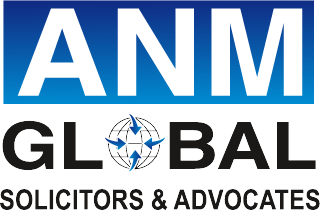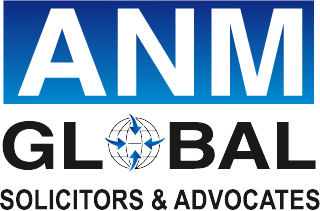In our last article, “MSME & IBC 1.0:1 Understanding MSME under the IBC, 2016”, we discussed the MSME Act, the reciprocity between IBC and MSME and the Roleplay so far. In this letter, we will touch base upon the aspect of Pre-Packaged Insolvency Resolution Process under the Insolvency and Bankruptcy Code (Amendment) Act, 2021.

Introduction to Pre-Packaged Insolvency Resolution Process (PPIRP)
Brought in by one of the most important amendments of the Insolvency and Bankruptcy Code (Amendment) Act, 20212 (“Code”), Pre- Packaged Insolvency Resolution Process (“PPIRP”) was born in April 2021, incorporated into Chapter IIIA of the Code. The mechanism of PPIRP involves a faster and more efficient process of facilitating an understanding between a debt ridden company and its’s creditors, as well as its investors, in order to reach an apposite resolution. The Financial Creditors of the company are free to deliberate over the proposed Base Resolution Plan (“BRP”) as submitted by the Corporate Applicant, which if agreed upon, is sent to the appropriate Tribunal i.e the National Company Law Tribunal, for their approval. Micro, Small and Medium Enterprises (“MSME”) were severely affected by the COVID-19 Pandemic and were thus brought within the scope of PPIRPs. On admission of the application initiating PIRP, moratorium as per Section 14 of the Code will come into force3. Accordingly, PPIRP is to be completed within 120 days of the commencement date, as provided for by Section 54(D). Such an approach helps reduce delays and uncertainties, as and when. Unlike the Corporate Insolvency Resolution Process (CIRP), in a PPIRP, the Corporate Debtor retains control of its management while being monitored by a Resolution Professional upon admission of the application.4
Eligibility for an entity to be able to apply for the PPIRP
A Corporate Debtor which is an MSME, as per Section 7 (1) of the Micro, Small and Medium Enterprises Development Act, 20065, is eligible to apply, if it-
- has committed a default of at least ₹10 lakh;
- is eligible to submit a resolution plan under Section 29A of the Code;
- has not undergone a PPIRP during the three years preceding the initiation date;
- has not completed a CIRP during the three years preceding the initiation date;
- is not undergoing a CIRP; and
- is not required to be liquidated by an order under Section 33 of the Code.
To evidence that the Corporate Debtor is an MSME, the application shall attach either a copy of the latest and updated Udyam Registration Certificate6 or proof of investment in plant and machinery or equipment and turnover as per Notification No. 2119(E) dated 26th June, 2020 of the Ministry of MSMEs7.
Relevant Sections in the said Code
With regard to PPIRP in the context of the Code, Section 54, sub-sections A to M encapsulate all the decisive provisions that an entity dealing with the same should be aware of. A Corporate Debtor, who falls under the provisions of Section 54(A) and has obtained an approval from its financial creditors, representing not less than 66%, would be eligible for the PPIRP. Upon meeting the requirements of the above-mentioned section, an application is to be filed with the Adjudicating Authority to initiate the process, as held by Section 54(C). It is the Resolution Professional who is responsible to ensure that this process goes by smoothly, they have a plethora of duties and powers with reference to the process, including assessing books & records of the Corporate Debtor, informing the creditors as regards their claims and monitoring the overall management of the affairs of the Corporate Debtor. Additionally, as per Section 54(I), a Committee of Creditors is to be constituted by the Resolution Professional within 7 days of the commencement date.
Important Cases in the Indian Context
- GCCL Infrastructure and Projects Limited8 was the first Corporate Debtor, who as an MSME, initiated PPIRP under Section 54 of IBC, 2016. The total debt payable by the Corporate Debtor to its various creditors was ₹54,16,250/-. The Corporate Debtor had fulfilled all the necessary pre-requisites that are to be fulfilled, such as, a Special Resolution was passed by the Members, as under Section 54A(2)(g), a Declaration was given by a majority of its Directors, as per s.54A(2)(f)and a BRP was submitted as well. And thus, the Ahemdabad NCLT admitted the application to initiate the said process.
- In the case of Shree Rajasthan Syntex Limited9 (SRS), SRS had obtained the consent of 66% of its Financial Creditors and had applied to initiate the process of PPIRP in March 2022. However, one of the banks that SRS was negotiating with to restructure its loans, filed a section 7 application to initiate CIRP. The Tribunal held that the latter was mala fide for the bank was well-informed of SRS’s effort to initiate PPIRP having fulfilled the requisites. After almost 267 days of altercations and objections, down to questioning if SRS was even an MSME and thus eligible to file for PPIRP, the Tribunal dismissed the CIRP application and admitted the PPIRP application.
- In the case of Sudal Industries Limited10 (Sudal), a PPIRP application was filled by Sudal while two CIRP applications were already pending. One of the two petitioners objected to the PPIRP stating that as per Section 11A(4), the Tribunal is to decide the Section 7 petition first. However, the Tribunal observed that both Section 7 and 54 aimed at achieving the same goal, that being the resolution of insolvency. The Tribunal dismissed the section 7 petitions and approved the PPIRP application, as filed under Section 54A
Global Context
USA
Insolvency in the USA is governed by the US Bankruptcy Code. USA has two types of PPIRP processes, one requires an approval from the creditors, while another is taken up by the Corporate Debtor. Individuals and Businesses seeking relief under the Bankruptcy Code are to file a petition under the Bankruptcy Code Chapters 7, 9, 11, 12, 13, and 15. In 1938, the Congress made statutory provisions for two distinct forms of bankruptcy reorganisation. It mainly brought in Chapter 11, which deals with “Pre-Packs”. All of the provisions of Chapter 11 for restructuring businesses, are available in the case of pre-packs. Generally, there are three types of prepackaged cases, Single-track pre-pack, Dual-track pre-pack & Partial pre-pack.
UK
Pre-packs are fairly common in the UK as well. In the UK, Pre-packs are often referred to as ‘pre-pack administrations’, for they were born out of a way of practice that aimed at limiting judicial intervention in the matters of economy and business, and took up an administrative course. Pre-packs in the UK refer to an arrangement wherein the sale of all or part of the business or assets of the debtor is negotiated with major creditors prior to the formal appointment of the insolvency practitioner as an administrator, and the sale is executed soon after their appointment. The administrator takes over the management of the debtor and initiates negotiations regarding the outcome of the administration, after being formally appointed as an administrator11. In UK, the “Graham Committee” was set up by the government of UK to analyse the pre-pack process. Basis the recommendation of the Graham Committee, the Statement of Insolvency Practice-1612 (SIP-16) incorporated the pre-packaged sales in administration. The Graham Committee has largely helped bring in transparency when dealing with pre-packs. The main aim of this form of pre-packs is to salvage those elements and assets of the insolvent company, that would allow business and trade to continue from a new company, relieved of the debts of the existing company. Pre-packs have made their way into multiple other jurisdictions such as Australia with its three forms, Germany, France, and even an upcoming resurgence of the same in Netherlands.
Amendments sought: Gaps to be filled
- While MSMEs are eligible to apply for PPIRP, more than 90% of the entities are partnership firms or propriety firms, and for this reason, the benefit of PPIRP cannot be availed by a majority of the firms
- PPIRP requires an approval of 66% of the voters and this could often lead to lag in the process, as well as a boon turning into a tool of manipulation by the creditors.
- Bringing in more flexibility in the approval process would increase the number of entities that would prefer the said process.
- Formulating a Resolution Plan would need financial and legal expertise, both of which come with a cost that smaller distressed companies might not be able to defray towards.
- More flexibility and a reduced interference of the Adjudicating Authority would help make the 120 days timeline achievable.
- Bankers are reluctant of taking first haircuts that may be probed at a later stage, for this reason PPIRP has not found many takers as yet.
Conclusion
It must be emphasized that the pre-pack process represents an effective addition to the insolvency resolution framework under the Code. While the convenience bought in by PPIRP is evident, it continues to be borne with a number of flaws. However, it does offer a consolidated framework and process that help resolve distressed assets while safeguarding stakeholders. A much sought after revision of its provisions would encourage more entities to take up this process.
Footnotes
3 Section 54E- Declaration of moratorium and public announcement during prepackaged insolvency resolution process
4 Section 54H- Management of affairs of corporate debtor
5 https://samadhaan.msme.gov.in/WriteReadData/DocumentFile/MSMED2006act.pdf
6 https://udyamregistration.gov.in/Government-India/Ministry-MSME-registration.htm
7 https://www.dcmsme.gov.in/IndianGazzate_0.pdf
8 CP(IB)/116(AHM)2021
9 CP No. (IBPP)- 01/54C/JPR/2022
10 CP (IBPP) No. 01/MB-IV/2022
11 https://ibbi.gov.in/uploads/resources/65b114e356eacaaa2dbd25b210f845da.pdf
12 https://insolvency-practitioners.org.uk/uploads/documents/f30389ce35ed923c06b2879fecdb616a.pdf





